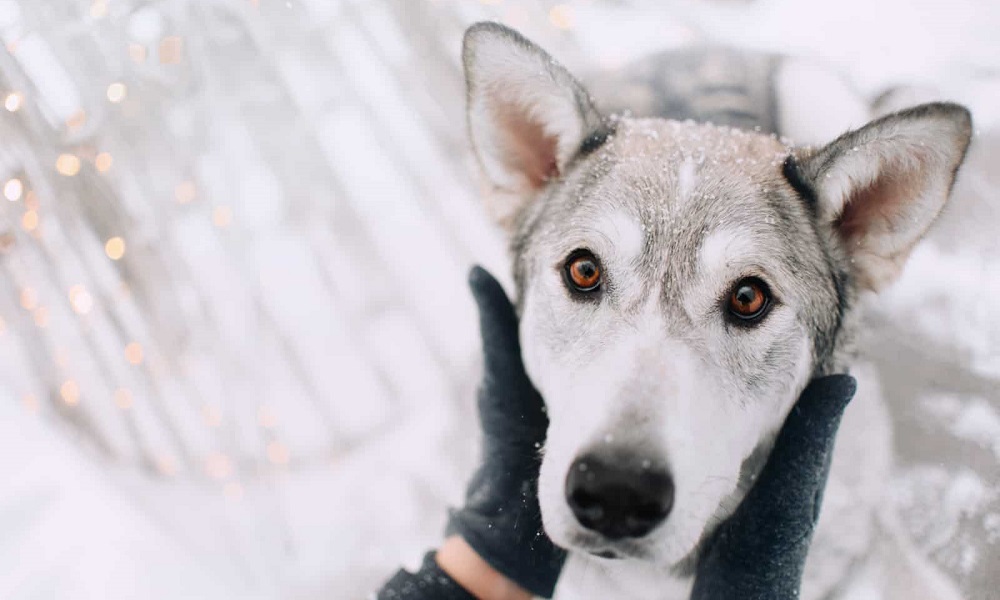Your dog’s ears are cold primarily due to reduced blood flow or chilly weather. The body conserves heat by limiting circulation to extremities.
Dogs often exhibit cold ears when exposed to lower temperatures, prompting their bodies to prioritize warming vital organs over extremities like ears. This physiological response can lead to cooler ears as the blood flow decreases to conserve core body heat.
Cold ears might also indicate an underlying health issue, so monitoring your pet for other symptoms is essential. Your dog’s overall wellness, breed, and fur thickness can also influence the temperature of their ears.
Dog owners should ensure their pets are comfortable and not exposed to severe cold for extended periods. Regular checks can help determine if the cold ears are a harmless response to the environment or a sign of something more serious needing veterinary attention.

Possible Reasons
Have you ever noticed your furry friend’s ears feeling unusually cold? It’s not uncommon. Dog ears can vary in temperature for many reasons. Let’s explore some possible explanations.
Weather Conditions
Cold weather can make your dog’s ears chilly. Just like humans, dogs can react to temperature changes. Here’s what to look for:
- Outdoor temperature: Ears feel cold after being outside? The weather might be to blame.
- Seasonal changes: Winter months can make your dog’s ears feel colder compared to summer.
- Indoor heating: Warm indoors, cold outdoors? Your dog’s ears can feel the difference.
Health Issues
Your dog’s health can also impact ear temperature. Keep an eye out for these signs:
- Circulation: Poor blood flow can lead to cold ears.
- Anemia: A lack of red blood cells can make ears cold.
- Infection: Ear infections might change ear temperature.
If your dog’s ears stay cold, a visit to the vet is a good idea. They can check for any hidden issues.
Weather Conditions
When it’s chilly outside, you bundle up to stay warm. But ever notice your furry friend’s ears feeling like little ice cubes? Those cold dog ears might be more than just a cold nose’s companion. Let’s dig into the reason behind this canine cold ear conundrum.
Low Temperature
Dogs react to cold weather just like humans do. As the mercury drops, blood is directed towards the body’s core to keep vital organs warm. This process can leave extremities like ears colder.
Here’s what can make your dog’s ears cold:
- Less blood flow to the ears
- Cool air sapping warmth
- Heat loss through the skin
Small and thin-eared dogs often feel the chill more. Their ears don’t retain heat as well.
Exposure To Cold
Time outside in the cold also affects your pup’s ears. Like ears tingling red for us, a dog’s cold ears signal they’ve been exposed to chilly conditions. Consider these factors:
- Duration: Longer outside equals colder ears.
- Activity: Play keeps blood flowing. Less play might mean colder ears.
- Wind: A breezy day can cool down ears fast.
Remember to monitor playtimes and consider doggie jackets or ear covers for warmth.
Health Issues
Cold ears in dogs may raise eyebrows among pet owners. It’s not just about the weather. Sometimes, it signals health problems. Let’s explore a few conditions that might lead to cold ears in our furry friends.
Infection
Dogs with ear infections often show signs like ear scratching or head shaking. Ear infections can change blood flow.
- Check for redness or discharge.
- Notice any bad smell.
- Watch for your dog’s discomfort or pain.
Ear infections need a vet’s attention quickly. They can cause cold ears by affecting the ear’s blood vessels.
Blood Circulation Problems
Blood circulation troubles can lead to cold ears. The heart pumps blood through the body. Sometimes the ears get less.
| Signs | Issues to Watch |
|---|---|
| Lethargy | Is your dog less playful or sleepy? |
| Weak Pulse | Feel your dog’s pulse near the hind leg. |
| Pale Gums | Peek inside your dog’s mouth. |
These signs speak volumes. Visit a vet if your dog’s ears stay cold. They can catch things early and help your pet stay happy and healthy.
Frequently Asked Questions
What Does It Mean When Dog Ears Are Cold?
Cold dog ears can indicate your pet is feeling chilly. It’s essential to monitor for other signs of discomfort or illness and consider providing warmth if necessary.
What Are Signs That Your Dog Is Cold?
Signs your dog is cold include shivering, whining, anxious behavior, and seeking shelter. They may also tuck their tail or hold paws off the ground.
Should Dogs Ears Be Warm?
Dogs’ ears may naturally be warm at times, but consistently hot ears could indicate fever or infection. Regular monitoring and vet checks are advisable for persistent warmth.
Why Is My Dog Cold To The Touch?
Your dog may be cold to the touch due to low ambient temperatures, poor circulation, or a potential medical condition. It’s important to monitor their behavior and consult a vet if the coldness persists or is accompanied by other symptoms.
Conclusion
Cold ears in dogs might be surprising, but often it’s no cause for alarm. Ensure your furry friend stays warm and check in with a vet if you’re concerned. Remember, a dog’s comfort is key to their happiness. Snuggle up and keep those canine ears toasty!